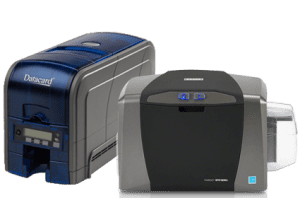When growing a business, it may be worthwhile to invest in ID cards. They are smart security solutions that separate the legitimate from the intruders. Looking to internalise the ID card production process? If so, you will need an ID card printer. These devices differ from regular printers in that, instead of paper, they print high-quality plastic. When choosing an ID card printer, select one that will cater to your business needs. Here is a guide to purchasing your ID card printer.
Why ID cards?
Typically used to regulate security, ID cards are invaluable assets to growing or larger organisations. ID cards are frequently distributed to internal office workers, often doubling as RFID passes for staff-activated devices (such as printers) or restricted-access areas. Businesses can also issue ID cards to external members or clients, an obvious example being gym membership cards. Although gym members may not work at the gym, their membership cards differentiate them from casual gym-goers. The cards allow them to ‘unlock’ member-exclusive features of the gym.

A technological background
There are two major types of ID card printers: direct-to-card and reverse transfer (also referred to as ‘retransfer’). Direct-to-card is the most time-efficient, using coloured overlays and monochromatic ribbons to create cards. Based on dye-sublimation processes, its ribbon panels are heated up by the print head, converting ink to vapour that diffuses across the card surface. Direct-to-card printers have a 300-DPI resolution for more intricate text and visuals. Reverse transfer printers use similar technology, but the difference is in the methodology used. They print images onto clear films that are then fused to card surfaces, and then allow for over-the-edge printing and quality printing consistent across uneven surfaces. Allowing for a 600-DPI resolution, reverse transfer printers provide the higher-quality option.

What are your business needs?
Now that you understand how ID card printers work, it’s time to consider your business needs. Does your business require cards to have built-in access control features, such as RDIF tags, magnetic strips, or smart chips? Or can you afford to cut costs by foregoing the extra bells and whistles? If your ID cards have uses beyond merely displaying identification, you will need to purchase a printer that allows for that extra functionality.
More advanced models
If your organisation holds high volumes of sensitive information, you’ll want to seriously consider adding smart chips to your ID cards. Smart chips have the advantage of storing information and containing executable programs, too. In particular, government organisations benefit from ID card printers that are able to include smart chips in their card-printing jobs.
When making your purchase, other printer features to consider include holographic lamination and micro-printing. Some of the more sophisticated high-end printers can even rewrite existing data on your cards. If your workplace is prone to change, such a printer could be an invaluable investment. By making a larger purchase upfront, you would avoid the ultimately greater cost of re-printing multiple cards for the sake of minor alterations.
Entry-level models
If you require ID cards for the sake of displaying identification and nothing more, there is (cost-effective) value in entry-level models of ID card printers. Not only are these models cost-efficient, but their smaller sizes allow for better portability and storage. Although they won’t have speed on their side, basic ID card printers can easily suffice for smaller organisations without high volumes of printing requirements.

Whatever decision you make, ensure it caters to your business requirements. What is your budget, and to what extent would the extra security features benefit your business? Will your chosen card printer match your current software? Smaller organisations may not need these extra bells and whistles, whilst government organisations benefit from the extra security on a daily basis. Internalising your ID card printing process is a commendable alternative to outsourcing. It cuts out the middleman and allows you to control your printing process from beginning to end.




